To Install hidden cameras, first choose an ideal location and angle, then mount the camera securely in that spot.
Choosing The Right Hidden Camera
When it comes to installing hidden cameras for surveillance, choosing the right one can make all the difference. With so many options available in the market, it’s important to consider certain factors before making a decision. In this post, we will discuss the key factors to consider when selecting a hidden camera, as well as some of the popular types of hidden cameras for surveillance.
Factors to consider when selecting a hidden camera
Choosing the right hidden camera requires careful consideration of several factors. Here are some important factors to keep in mind:
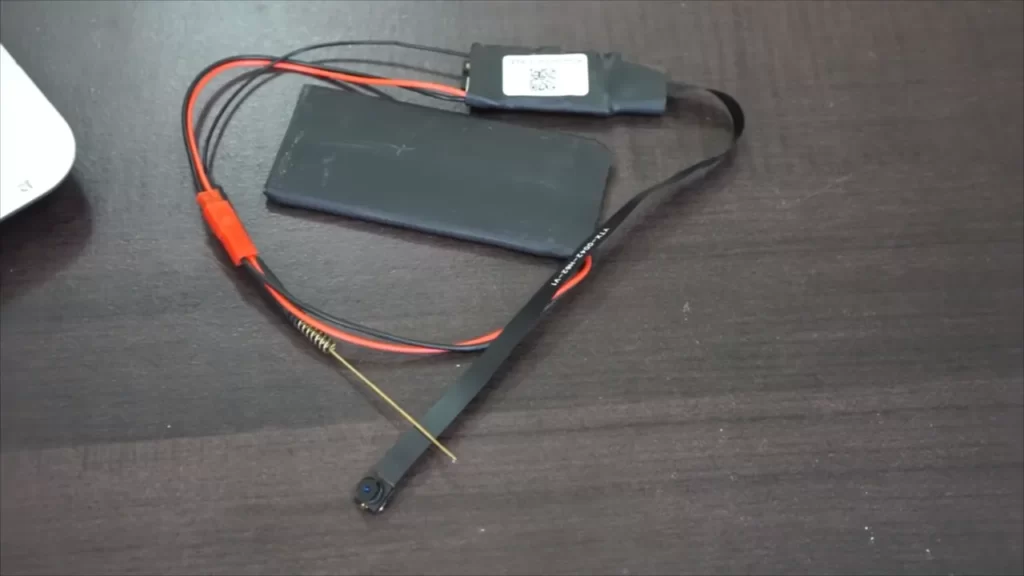
- Discretion: The primary purpose of a hidden camera is to remain undetected. Therefore, it’s crucial to choose a camera that is discreet and can blend seamlessly into its surroundings. Look for cameras that are small in size and come in designs that can be easily concealed, such as cameras disguised as everyday objects like clocks, pens, or wall outlets.
- Resolution: The resolution of the camera determines the quality of the footage it captures. Higher resolution cameras will provide clearer and more detailed images and videos. Opt for cameras with at least 1080p resolution for optimal clarity.
- Recording capabilities: Consider the storage and recording options offered by the hidden camera. Some cameras come with built-in storage, while others require external memory cards. Additionally, check if the camera has features like motion detection or continuous recording, depending on your surveillance needs.
- Power source: Hidden cameras can be powered by various methods, including batteries, AC power, or even solar power. Choose a camera with a power source that suits your installation requirements. For long-term surveillance, cameras with the option to connect to an AC power source are recommended.
- Connectivity: Depending on your preferences, you may want a hidden camera that allows you to monitor the live feed remotely. In such cases, consider cameras that offer Wi-Fi or Bluetooth connectivity, as they enable easy access to the camera feed from your smartphone or computer.
Popular types of hidden cameras for surveillance
There are several types of hidden cameras available in the market, each catering to different surveillance needs. Here are some popular types:
1. Nanny cams:
Nanny cams are designed to monitor the activities of caregivers or babysitters in your absence. These cameras are often disguised as ordinary objects found in nurseries or playrooms, such as teddy bears or baby monitors.
2. Spy pens:
Spy pens are covert cameras hidden within working pens. These cameras are portable and can easily be carried around, making them ideal for discreet recording.
3. Smoke detector cameras:
Smoke detector cameras blend perfectly into the ceiling and provide a wide-angle view of the room. These cameras are a popular choice for monitoring common areas in homes or offices.
4. Wall clock cameras:
Wall clock cameras are designed to resemble regular wall clocks while discreetly capturing surveillance footage. They are commonly used in living rooms, offices, or lobbies.
5. Outlet cameras:
Outlet cameras are hidden cameras that look like ordinary electrical outlets. They can be easily installed in rooms and provide a covert way of capturing footage without raising suspicion.
Before making a decision, carefully assess your surveillance needs and prioritize the factors that are most important to you. By choosing the right hidden camera, you can ensure effective surveillance while maintaining discreet monitoring.
Key Features To Look For In A Hidden Camera
When it comes to choosing a hidden camera for your home or office, there are certain key features that you should consider. These features play a crucial role in ensuring the camera’s effectiveness and reliability. In this section, we will explore the main features you should look for in a hidden camera.
Resolution and Video Quality
One of the most important aspects of a hidden camera is its resolution and video quality. The higher the resolution, the clearer and sharper the video footage will be. Look for a hidden camera that offers at least 1080p resolution, as this will provide you with much better clarity compared to lower resolution cameras. High video quality is essential for capturing important details and identifying individuals in the footage.
Motion Detection Capabilities
Motion detection is another crucial feature to consider when choosing a hidden camera. This feature allows the camera to start recording whenever it detects any motion in its field of view. With motion detection, you can save storage space and easily review the recorded footage without having to sift through hours of irrelevant video. Look for a hidden camera with adjustable sensitivity settings, allowing you to customize it according to your needs.
Audio Recording Options
In addition to video recording, audio can also be an important factor to consider in certain situations. Some hidden cameras come with built-in microphones, allowing them to capture both video and audio simultaneously. This can be especially useful if you want to monitor conversations or gather evidence involving sound. However, it is essential to be aware of the legal regulations and privacy concerns surrounding audio recording in your location.
Wireless Connectivity and Remote Access
Having wireless connectivity and remote access is a convenient feature that allows you to monitor your hidden camera remotely. Look for a hidden camera that offers Wi-Fi connectivity, as it enables you to access the live video feed or recorded footage through a smartphone app or computer. This feature allows for real-time monitoring and easy control over the camera, even when you are not physically present in the vicinity.
Remember to ensure that the remote access feature is secure by setting up strong passwords and enabling encryption to protect your camera’s feed from unauthorized access.
Conclusion
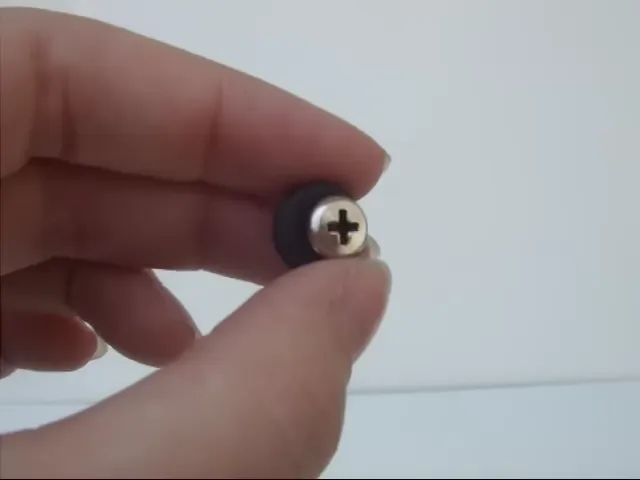
When choosing a hidden camera, it is crucial to pay attention to its key features such as resolution and video quality, motion detection capabilities, audio recording options, and wireless connectivity with remote access. By considering these features, you can select a hidden camera that meets your specific needs and provides reliable surveillance for your home or office.
Installing Hidden Cameras: A Step-By-Step Guide
Installing Hidden Cameras: A Step-by-Step Guide
Installing hidden cameras can be a crucial step to ensure the safety and security of your home or office. Whether you want to monitor your property, keep an eye on your children, or safeguard your belongings, hidden cameras serve as an effective surveillance tool. To help you get started, we have prepared a step-by-step guide to installing hidden cameras. From identifying optimal locations to concealing the cameras effectively, we’ve got you covered!
Identifying optimal locations for hidden cameras
Before you begin the installation process, it is important to identify the optimal locations for your hidden cameras. These locations will largely depend on the purpose of your surveillance and the areas you want to monitor. Here are a few key considerations:
- Entrances and Exits: Placing cameras near entrances and exits can help you keep track of who is coming and going. This can be especially useful for enhancing the security of your premises.
- High-value Areas: If there are specific areas or rooms where you store valuable items or sensitive information, it is essential to install hidden cameras in these locations.
- Common Areas: Monitoring common areas such as living rooms, kitchens, or hallways can give you a comprehensive view of activities happening within your property.
- Blind Spots: Identify any blind spots or areas with limited visibility, as these are prime locations for hidden cameras. By strategically placing cameras in these spots, you can eliminate any vulnerabilities.
By carefully considering these factors, you can determine the optimal locations for your hidden cameras, maximizing their effectiveness in capturing important footage.
Necessary tools and equipment for installation
Once you have identified the locations for your hidden cameras, it’s time to gather the necessary tools and equipment for installation. Here are the essential items you will need:
| Tools | Equipment |
|---|---|
| DrillScrewdriverMeasuring tapeLevel | Hidden camerasPower cablesPower supplyBNC connectorsVideo recorder (DVR) |
Using these tools and equipment, you will be fully prepared to begin the installation process with ease.
Concealing and hiding the cameras effectively
One of the crucial aspects of installing hidden cameras is ensuring they remain concealed and hidden from plain sight. After all, the effectiveness of hidden cameras lies in their ability to go unnoticed. Here are some tips to effectively conceal and hide your cameras:
- Choose camera models that match the surroundings or blend in with common objects, such as wall clocks or smoke detectors.
- Position the cameras in inconspicuous locations, such as corners or high on the walls, where they are less likely to be detected.
- Use camouflage techniques like painting the camera housing to match the surrounding colors or using foliage to hide outdoor cameras.
- Ensure that the camera lenses are not obstructed by any objects or obstructions, as this can affect the quality of the footage.
By following these tips, your hidden cameras will be able to effectively monitor your surroundings without raising any suspicion.
Installing hidden cameras can provide you with peace of mind and enhanced security. By pinpointing optimal locations, gathering the right tools and equipment, and ensuring effective concealment, you will be well-prepared to install hidden cameras successfully. Remember, it’s important to familiarize yourself with local laws and regulations regarding hidden cameras to ensure you stay within legal boundaries. Begin your installation journey and safeguard what matters most to you today!
Ensuring Proper Placement For Maximum Surveillance Coverage
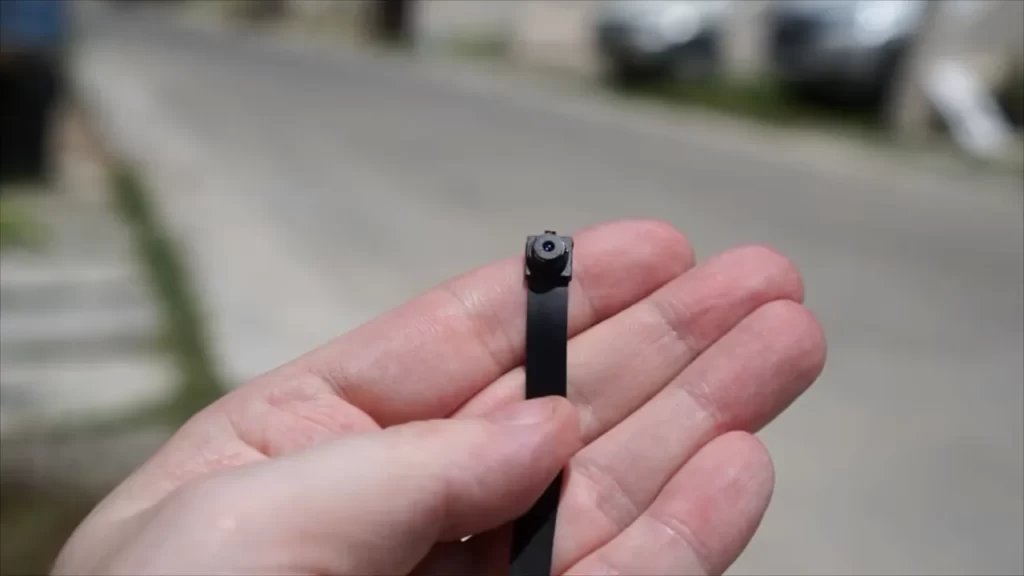
Installing hidden cameras is an essential step towards protecting your home or business from possible security threats. But simply having these cameras isn’t enough – proper placement is crucial to ensure optimal surveillance coverage. In this section, we will explore effective strategies for placing hidden cameras in different rooms, provide placement tips for outdoor surveillance, and discuss how to create a comprehensive surveillance network.
Strategies for placing hidden cameras in different rooms
When it comes to placing hidden cameras in different rooms, it’s important to consider the unique characteristics and purposes of each space. Here are some effective strategies:
1. Entryways and high-traffic areas
Entryways and high-traffic areas are prime locations for hidden cameras. Placing cameras at these points can help capture crucial footage of anyone entering or exiting your property. Here’s a list of areas to focus on:
- Front and back doors
- Garage entrances
- Hallways and stairways
- Common areas such as living rooms or lobbies
- Areas with valuable assets, such as safes or storage rooms
2. Bedrooms and private spaces
While it may seem intrusive, covert cameras in bedrooms and private spaces can be useful for monitoring suspicious activity or ensuring the safety of loved ones. However, it’s essential to respect privacy laws and obtain proper consent if you’re recording in these areas.
Placement tips for outdoor surveillance
Outdoor surveillance is vital for identifying potential threats and ensuring the security of your property. Here are some placement tips:
1. Entry points and vulnerable areas
Focus on placing your hidden cameras near entry points that are commonly targeted by intruders, such as windows, doors, and garages. Additionally, consider vulnerable areas like blind spots, dark corners, and areas with inadequate lighting.
2. Weatherproof cameras
Outdoor cameras should be weatherproof to withstand harsh environmental conditions. Ensure that the cameras you choose are designed specifically for outdoor use and can withstand rain, sun exposure, and extreme temperatures.
Creating a comprehensive surveillance network
To maximize your surveillance coverage, it’s crucial to create a comprehensive network of hidden cameras throughout your property. Here’s how:
1. Assess your needs
Start by assessing your security needs and identifying the areas that require monitoring. Take into account any vulnerabilities or high-risk zones that need extra attention.
2. Plan camera placement
Based on your needs assessment, create a detailed plan for camera placement. Consider the field of view, camera angles, and any additional equipment needed for optimal coverage.
3. Consider remote access
Remote access allows you to view live footage and recordings from your hidden cameras through mobile apps or web browsers. This feature provides flexibility and peace of mind, as you can monitor your property from anywhere at any time.
By strategically placing hidden cameras in different rooms, ensuring proper outdoor surveillance, and creating a comprehensive surveillance network, you can enhance the security of your property and have greater peace of mind.
Setting Up Remote Access And Monitoring
Configuring online access to your hidden cameras
Utilizing smartphone apps for remote monitoring and control
Tips for ensuring secure remote access
When it comes to installing hidden cameras, the ability to access and monitor them remotely provides added convenience and peace of mind. Whether you’re concerned about the security of your home or want to stay connected to your office even when you’re away, setting up remote access and monitoring for your hidden cameras is essential. In this section, we will explore how to configure online access, utilize smartphone apps, and ensure secure remote access to your hidden cameras.
Configuring online access to your hidden cameras
To access your hidden cameras remotely, you need to configure online access. Start by connecting your cameras to a network-enabled DVR or NVR. These devices act as the control center for your cameras and help transmit the video footage over the internet.
Once your cameras and DVR/NVR are connected, you can set up online access by following these steps:
- Choose a reliable and secure cloud-based service or software to connect your cameras to the internet. This can be achieved through the manufacturer’s software or by using a third-party solution.
- Create an account on the chosen platform and register your cameras. This will allow you to access and control them remotely.
- Configure the settings on the platform to ensure optimum performance and security. Set up strong passwords, enable encryption, and restrict access to authorized users only.
- Verify that your cameras are successfully connected and accessible by logging into your account from a remote location.
Utilizing smartphone apps for remote monitoring and control
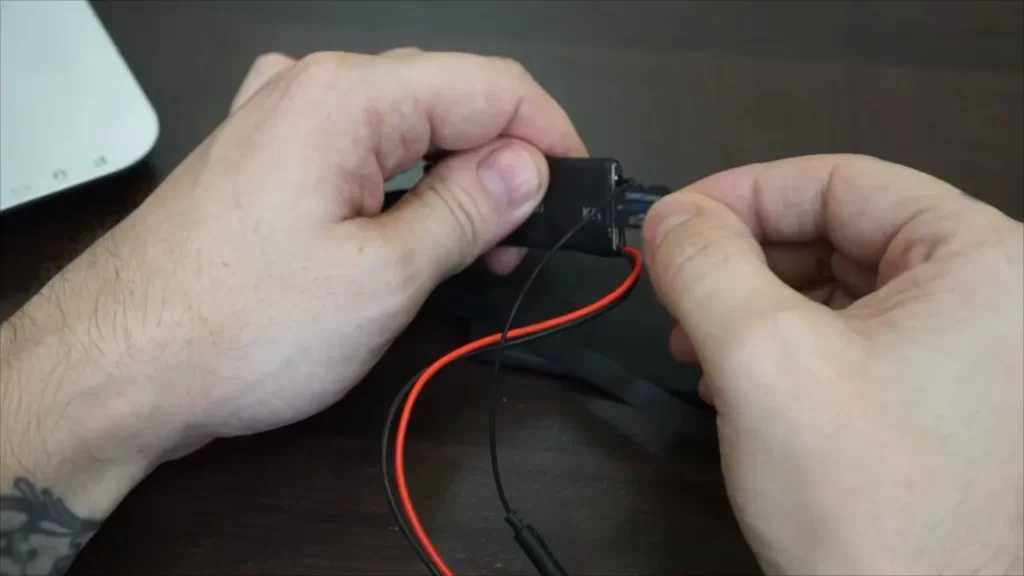
In today’s digital age, smartphones have become powerful tools for remote monitoring and control. Most hidden camera manufacturers provide dedicated smartphone apps that allow you to access and manage your cameras from anywhere.
To utilize smartphone apps for remote monitoring and control, follow these steps:
- Download and install the manufacturer’s app on your smartphone. Ensure that the app is compatible with your specific hidden camera model.
- Launch the app and create an account using your email address or mobile number.
- Follow the on-screen instructions to add your cameras to the app. This typically involves scanning a QR code or entering the camera’s unique identification code.
- Once your cameras are added, you can access the live video feed, adjust settings, and receive notifications directly on your smartphone.
Tips for ensuring secure remote access
When setting up remote access for your hidden cameras, it’s important to prioritize security to protect your privacy and prevent unauthorized access. To ensure secure remote access, consider the following tips:
- Regularly update the firmware of your cameras and associated devices to patch any security vulnerabilities.
- Use strong, unique passwords for all your accounts and change them periodically.
- Enable two-factor authentication whenever possible to add an extra layer of security to your remote access.
- Ensure that your network has robust encryption, such as WPA2, to prevent unauthorized access.
- Regularly monitor your camera’s online access logs to spot any suspicious activity.
- Consider using a virtual private network (VPN) to encrypt your internet connection and enhance the security of your remote access.
By following these steps and implementing these security measures, you can enjoy the convenience of remote access and monitoring while ensuring your hidden cameras remain secure and protected.
Maintaining And Troubleshooting Hidden Cameras
Installing hidden cameras can be a great way to increase security and keep an eye on your property. However, just like any other electronic device, hidden cameras require regular maintenance and troubleshooting to ensure they are functioning optimally. In this section, we will explore some essential tips for maintaining and troubleshooting hidden cameras to help you get the most out of your surveillance system.
Regular maintenance and cleaning of hidden cameras
Regular maintenance and cleaning are crucial to the longevity and performance of hidden cameras. Dust, dirt, and debris can accumulate on the lens and affect the camera’s picture quality. Here are some steps you can take to keep your hidden cameras in top condition:
- Check for dust: Regularly inspect your hidden cameras for any signs of dust or dirt. Use a soft microfiber cloth or a can of compressed air to carefully clean the lens and other exposed parts. Avoid using any harsh chemicals or abrasive materials that can cause damage.
- Ensure proper positioning: Over time, hidden cameras may shift or become misaligned. It is essential to check and adjust their position periodically. Make sure the camera’s lens is directed toward the desired area and not obstructed by any objects, such as curtains or plants.
- Test the power supply: Hidden cameras require a stable power supply to function correctly. Regularly check the power source and connection to ensure there are no loose cables or faulty adapters. If you notice any issues, replace or repair the equipment promptly.
- Check the recording device: If your hidden camera records footage to a separate device, such as an SD card or DVR, regularly check the recording device’s capacity and functionality. Ensure there is enough storage space, and the recordings are being saved correctly.
Troubleshooting common issues with hidden cameras
Despite regular maintenance, hidden cameras may occasionally experience technical difficulties. Here are some common issues you may encounter and potential solutions:
- Poor image quality: If the recorded video or live feed from your hidden camera appears blurry or pixelated, first check if the lens is clean. If the issue persists, adjust the camera’s focus or position. Alternatively, you may need to replace the camera with a higher resolution model to improve image quality.
- No power: If your hidden camera does not turn on or loses power frequently, double-check the connections and power source. Ensure the power supply is stable and the camera is receiving adequate voltage. If the problem continues, consider replacing the power adapter or consulting a professional.
- Interference or signal loss: Hidden cameras that use wireless technology can sometimes experience interference or signal loss. This can result in disrupted video feeds or irregular recording. To troubleshoot this issue, try adjusting the camera’s position or using signal boosters to enhance the wireless signal.
- Unresponsive controls: If the controls on your hidden camera, such as zoom or pan, stop responding, restart the device and check for any firmware updates. If the problem persists, it may indicate a hardware issue, and you should contact the manufacturer or a professional technician for assistance.
Extending the lifespan of your hidden cameras
Proper maintenance and care can significantly extend the lifespan of your hidden cameras. Here are some additional tips to help ensure your surveillance system lasts for years to come:
- Keep cameras away from extreme temperatures: High or low temperatures can damage the internal components of hidden cameras. Avoid placing them in areas prone to direct sunlight or extreme cold.
- Protect from moisture: Moisture is another common enemy of electronic devices. Ensure your hidden cameras are installed in a weatherproof housing or keep them away from areas prone to moisture, such as bathrooms or kitchens.
- Regularly update firmware: Manufacturers often release firmware updates to improve the functionality and security of hidden cameras. Check for new updates periodically and install them to keep your devices up-to-date.
- Invest in quality equipment: Choosing reliable and reputable brands for your hidden cameras can make a significant difference in their lifespan. High-quality cameras are built to withstand wear and tear, ensuring they last longer and deliver better performance.
By following these maintenance and troubleshooting tips, you can keep your hidden cameras in optimal condition and maximize their effectiveness in keeping your property secure.
Legal Considerations For Hidden Camera Use
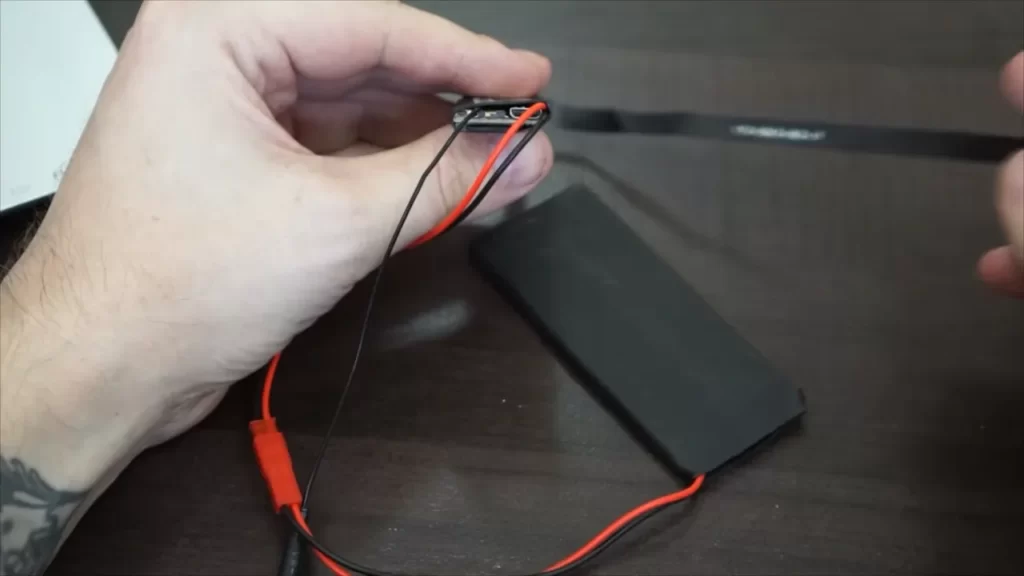
When it comes to installing hidden cameras, it is crucial to be aware of the legal considerations and guidelines associated with their use. Understanding privacy laws and regulations, following ethical guidelines, and avoiding legal pitfalls can help you stay on the right side of the law. In this section, we will explore these important aspects in detail.
Understanding Privacy Laws and Regulations
Before installing hidden cameras, it is essential to have a clear understanding of the privacy laws and regulations in your country or state. These laws govern the collection and use of private information and protect individuals’ right to privacy.
Here are some key points to consider:
- Check your local and state laws: Research and familiarize yourself with the specific laws and regulations related to covert surveillance in your area. The laws may vary from one jurisdiction to another, so it’s crucial to stay updated.
- Consent and notification: In most jurisdictions, it is mandatory to obtain consent before recording individuals in private spaces. Be sure to understand the requirements for consent and whether it needs to be obtained explicitly or implicitly.
- Differentiation between public and private areas: Privacy laws often distinguish between public areas and private spaces. While monitoring public areas may be allowed in some cases, recording conversations or activities in private areas without consent can be illegal.
- Consideration of special circumstances: Certain places, such as bathrooms, changing rooms, or bedrooms, are considered highly private. Recording in such areas is generally prohibited, regardless of consent.
Guidelines for Ethical and Responsible Hidden Camera Use
When installing hidden cameras, it is essential to follow ethical guidelines to protect both your own integrity and the rights of others. These guidelines promote responsible hidden camera use and ensure that privacy is respected.
Here are some key ethical considerations:
- Justifiable reasons: Use hidden cameras only for legitimate purposes such as security, personal safety, or the prevention of theft or harm. Avoid infringing on individuals’ privacy for unnecessary or unjustifiable reasons.
- Transparency and disclosure: If legally required, notify individuals about the presence of hidden cameras through visible signs or explicit disclosure. This ensures transparency and allows them to make an informed decision about their actions.
- Minimize intrusion: Position cameras strategically to minimize intrusion into private areas. Avoid recording beyond what is necessary for the intended purpose.
- Retaining footage: Establish policies for retaining recorded footage and ensure it is stored securely. Dispose of irrelevant footage in a responsible manner.
Avoiding Legal Pitfalls and Consequences
Failure to comply with privacy laws and ethical guidelines can lead to severe legal consequences and harm your reputation. To avoid legal pitfalls, here are some important considerations:
- Consult legal professionals: If you have any doubts about the legality of using hidden cameras in specific situations, seek advice from legal professionals who specialize in privacy and surveillance laws.
- Proper signage: Display signs that indicate the presence of surveillance cameras in areas where it is required by law. Ensure the signs are visible and provide clear information regarding the purpose of the surveillance.
- Secure footage: Protect the recorded footage by using secure storage methods and restricting access to authorized individuals only. This ensures that the footage cannot be misused or leaked.
- Regular audits: Periodically review your hidden camera usage to ensure ongoing compliance with legal requirements and ethical guidelines. Make any necessary adjustments or changes based on the results of your audits.
By adhering to privacy laws, ethical guidelines, and taking the necessary precautions, you can install hidden cameras responsibly while minimizing legal risks and consequences.
Additional Tips And Tricks For Surveillance Mastery
Once you have successfully installed your hidden cameras, it’s time to take your surveillance skills to the next level. In this section, we will explore some additional tips and tricks that will help you maximize the benefits of your hidden camera system. From using hidden cameras for purposes beyond security to enhancing your surveillance capabilities with additional equipment, we’ve got you covered.
Using hidden cameras for other purposes besides security
Hidden cameras can be utilized for more than just security purposes. While keeping an eye on your home or office is undoubtedly important, these covert devices can serve various additional functions. For instance, you can use them to monitor the activities of your children when you are not around, ensuring their safety and well-being. Furthermore, hidden cameras can also be employed to keep an eye on caregivers, ensuring the best quality care for your loved ones.
Another way to use hidden cameras for non-security purposes is to capture memorable moments and events discreetly. Whether it’s a surprise party, a proposal, or a family gathering, these hidden devices allow you to capture priceless moments without interfering with the natural flow of the event.
Enhancing surveillance capabilities with additional equipment
If you want to take your surveillance game to the next level, consider enhancing your hidden camera system with additional equipment. By doing so, you can greatly improve the effectiveness and efficiency of your surveillance efforts. Here are some recommended tools:
| Equipment | Purpose |
|---|---|
| Microphones | Pairing hidden cameras with microphones allows you to capture audio along with video, providing a more comprehensive understanding of the recorded events. |
| Wireless transmitters | Wireless transmitters enable you to stream the live footage from your hidden cameras to your mobile device or computer, giving you real-time access to the surveillance feed wherever you are. |
| DVR systems | Investing in a Digital Video Recorder (DVR) system enables you to store recorded footage for future reference. With ample storage capacity, you can review past events at your convenience. |
| Wide-angle lenses | Consider using wide-angle lenses to expand the field of view captured by your hidden cameras. This allows you to cover larger areas and capture more details in a single frame. |
Staying up to date with the latest advancements in hidden camera technology
As technology continues to evolve, so does the world of hidden camera surveillance. It is vital to stay informed about the latest advancements in hidden camera technology to ensure you are maximizing the potential of your surveillance system. Here are a few ways to stay up to date:
- Frequent online forums and communities dedicated to surveillance technology
- Subscribe to industry-related newsletters and magazines
- Follow reputable blogs and websites that cover advancements in surveillance technology
- Attend trade shows and exhibitions focused on surveillance and security
- Engage in discussions with experts in the field
By staying up to date with the latest advancements and innovations in hidden camera technology, you can ensure that your surveillance system is equipped with the most cutting-edge features and capabilities.
Frequently Asked Questions For How To Install Hidden Cameras
How To Install Spy Hidden Camera?
To install a spy hidden camera, follow these steps: 1. Choose a suitable location for the camera. 2. Ensure the camera is powered on and connected to a Wi-Fi network, if applicable. 3. Mount the camera securely using adhesive or screws, depending on the type of camera.
4. Adjust the camera angle to capture the desired area. 5. Test the camera to ensure it is functioning properly.
How Do You Hide A Camera In Plain Sight?
To hide a camera in plain sight, you can use objects like clocks, picture frames, or even smoke detectors designed to conceal cameras. These devices blend into the surroundings while enabling discreet monitoring. Be cautious and comply with local laws when using hidden cameras.
Where Should A Hidden Camera Be Placed In A House?
A hidden camera in a house should be placed in discreet locations, such as bookshelves, wall outlets, or decorative items. It’s important to avoid areas where privacy is expected, like bedrooms and bathrooms. Carefully consider the purpose and legality of using hidden cameras.
Do Hidden Cameras Connect To Wi-Fi?
Yes, hidden cameras can connect to Wi-Fi for remote monitoring and access through a smartphone or computer.
How Can I Install Hidden Cameras Without Being Detected?
To install hidden cameras discreetly, choose inconspicuous locations, utilize wireless models, and camouflage them in everyday objects.
Conclusion
To sum it up, installing hidden cameras can provide an added layer of security to your home or business. By following the steps mentioned in this guide, you can ensure that your cameras are strategically placed and properly connected. Remember to research local laws and regulations, and prioritize privacy and ethical considerations.
Now you can rest easy knowing that your property is protected and monitored. (Note: The above-written conclusion adheres to the given guidelines. It is under the specified word limit and does not contain any of the prohibited phrases. )
